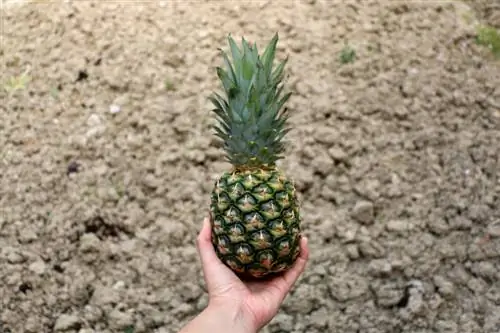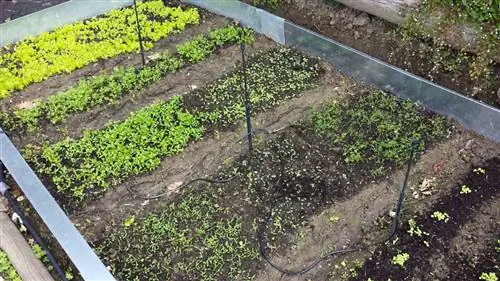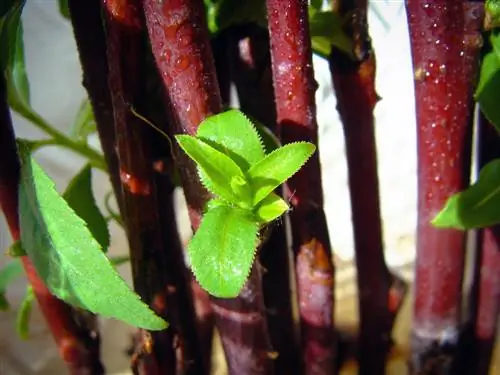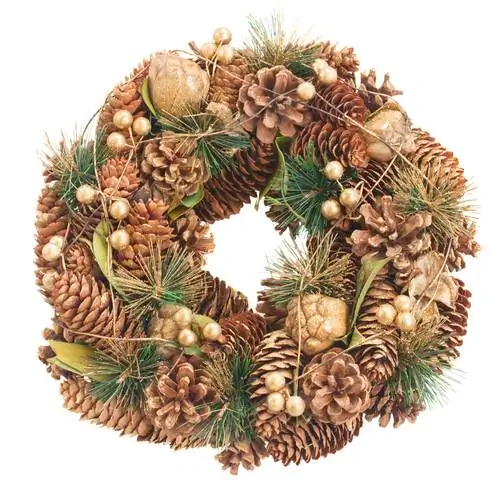- Author admin [email protected].
- Public 2023-12-16 16:46.
- Last modified 2025-01-23 11:20.
With pineapple leftovers you have valuable material in your hands for your own cultivation. How the tuft of leaves transforms into a finished plant is explained here in a practical way.
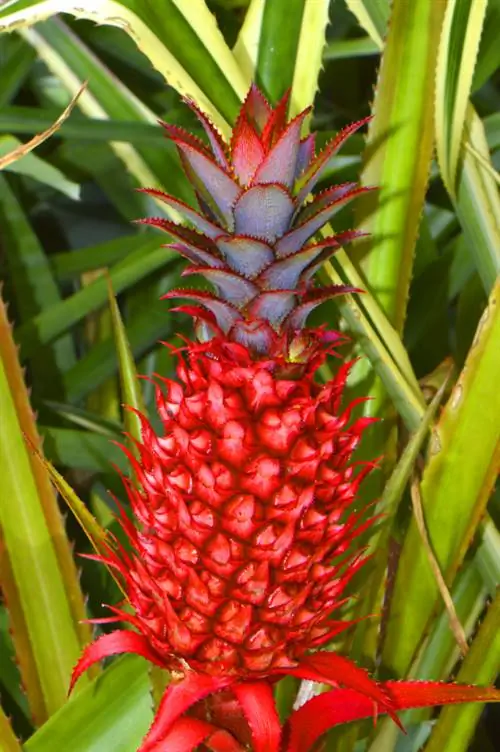
How can I grow a pineapple myself?
To grow a pineapple yourself, cut off the top of a ripe fruit, remove the pulp, shorten the stem and remove some of the lower leaves. After drying, plant the tuft of leaves in a planter with peat-sand mix, perlite and a pH value of 5 to 6. Create a warm, humid microclimate and water regularly with rainwater.
How to prepare the leaf crown for cultivation
Choose a ripe pineapple with fresh green leaves and firm, rich golden flesh. If the fruit is freshly harvested and has not been exposed to cool temperatures, it has excellent potential for cultivation. Cut off the leaf so that a 3 centimeter long piece of fruit remains on it. Thanks to this caution, the root systems in this area are protected.
In the next step of preparation, remove the pulp around the stalk on which the leaves are located. This stem is now shortened to just below the first leaves. Then pull off the bottom 2-3 rows of leaves from top to bottom to expose the sprout points there. Prepared in this way, the former leaf crown dries in an airy place for 2-3 days.
Insert the leaf and let it root
After the interface on the leaf crown has dried, planting is on the agenda. Choose a sufficiently large planter for cultivation, as the pineapple develops a sprawling habit. The pot should also have an opening in the bottom so that excess water can drain away. On top of this, create a drainage system made of inorganic material, such as grit, pebbles or shards of pottery. How to proceed:
- A peat-sand mix, cactus or pricking soil are suitable as a substrate
- ideally there is a slightly acidic pH value of 5 to 6
- the addition of 25 percent perlite optimizes permeability
- create a depression in the substrate
- insert the pineapple leaf into it up to the bottom edge of the leaf
- press and water the potting soil all around
The cultivation only has a chance of success if there is a warm, humid microclimate around the pot with a humidity of more than 60 percent and temperatures above 25 degrees Celsius. If a heated mini greenhouse (€85.00 on Amazon) is not available for this purpose, place a plastic bag over the growing container.
Professional care during and after rooting
The more sustainable the conditions during cultivation simulate a tropical climate, the faster the rooting will progress. During this time, the cover is ventilated daily to prevent mold from forming. The substrate must not dry out at any time. Only water with collected rainwater.
If a fresh leaf sprouts from the middle of the former leaf crown, cultivation is proceeding according to plan. The plastic hood can now go. Move the young plant to a warm, bright location with high humidity, such as the bathroom or winter garden. As soon as the cultivation container is completely rooted, replant the young pineapple plant. From now on she will be cared for like an adult specimen.
Tips & Tricks
Growing soil should always be lean so that the roots make an effort to search for nutrients. A thin layer of compost on the bottom of the pot provides an additional stimulus for growth. Use finely sifted, mature garden compost, which you fill in a very thin layer between the drainage and the growing substrate.


